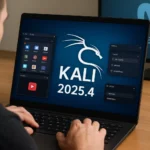Microsoft’s Windows Recall AI feature, which sparked significant controversy upon its introduction, has once again become the center of attention in the cybersecurity community. Initially designed to enhance user experience by allowing easy access to previously viewed information, the feature has faced criticism from security experts and privacy advocates alike. Recent developments have added another layer of complexity to the ongoing debate.
Understanding Windows Recall: Features and Functionality
Introduced in May 2024, Windows Recall was intended to revolutionize information retrieval on Windows systems. The feature operates by capturing screenshots of active windows at regular intervals, processing them using a Neural Processing Unit (NPU) and AI models to extract data, and storing the information in a SQLite database. This allows users to search their history using natural language queries.
Originally planned for default activation on new Copilot+ PCs, Recall’s comprehensive data collection capabilities raised immediate red flags among cybersecurity professionals. Many experts likened the feature to a built-in keylogger, highlighting its potential for data theft and privacy violations.
Microsoft’s Response to Initial Criticism
In response to the backlash, Microsoft took several steps to address security concerns:
- Delayed the launch of Windows Recall
- Made the feature optional rather than default
- Implemented encryption for the database, accessible only through Windows Hello authentication
- Limited availability to Windows Insiders program participants
These measures aimed to strike a balance between innovation and user privacy, but the controversy surrounding Windows Recall was far from over.
The Unexpected Turn: Removal Option and Microsoft’s Clarification
Recently, with the release of Windows 11 version 24H2 (KB5041865), users discovered an option to completely remove and disable Recall in the Windows Features section. This development was initially perceived as Microsoft’s further concession to critics. However, the company has since clarified that this option was included erroneously.
Brandon LeBlanc, a senior product manager at Windows, stated: “We are aware of an issue where the Recall feature was mistakenly listed as an option in the ‘Turn Windows features on or off’ dialog in Control Panel. This will be corrected in an upcoming update.”
Implications for Cybersecurity and User Privacy
The confusion surrounding the removal option for Windows Recall highlights the ongoing tension between technological advancement and privacy protection. As AI features become more integrated into operating systems, the cybersecurity community must remain vigilant in assessing potential risks and advocating for user control over personal data.
While Microsoft has confirmed that the removal option was unintentional, speculation persists about the company’s future plans for Windows Recall. Some experts suggest that regulatory pressures, particularly from the EU’s Digital Services Act (DSA), may eventually force Microsoft to provide users with the ability to fully remove the feature.
As this situation continues to evolve, it serves as a reminder of the complex interplay between innovation, user experience, and privacy in the digital age. Cybersecurity professionals and end-users alike should stay informed about these developments and their potential impact on data protection and system integrity.







If Windows Recall takes screenshots and makes an accessible record of a Teams meeting then under Australian Federal law this is an telecommunications interception by the owner. State laws make it unlawful to make a record of a private telecommunication unless one or all parties (depending on the state) to the communication consent.
I guess this will just go the same way our privacy went when Zuckerburg sold our data because he decided he owned it. And the politicians believed it.